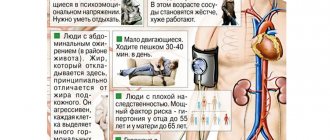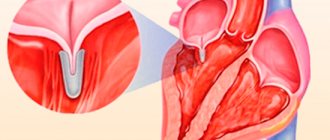The phrase “oncological disease” hides many pathologies of various kinds. More than a hundred pathologies share only a few common features - abnormal cell structure under the influence of a certain genetic mutation, which is expressed in uncontrolled reproduction and lack of an adequate response to external signals. This is how a malignant tumor settles in the human body. Over time, it increases in size, invading the space of neighboring tissues and organs. Some malignant cells, breaking away from the tumor, migrate to other organs, and secondary foci of the disease appear, called metastases.
The importance of identifying stages of the disease
Without proper treatment, the disease spreads progressively and becomes more difficult to treat. In the initial stages, cancer is quite easily treated by removal, but in the presence of metastases, achieving remission becomes almost impossible.
To correctly determine the stage of disease development, a cancer staging system was developed. Of course, universal staging levels are used for all diseases, but in each specific type of disease they have their own differences. Correctly determining the stage of the disease is the primary task for the oncologist at the examination stage.
Treatment regimen
The first thing that is recommended for every hypertensive patient is to eliminate factors that increase the risk of complications. It is necessary to quit smoking and drinking alcohol, engage in acceptable physical activity, lose weight, and pay attention to the treatment of diseases of internal organs and systems.
Stage 3 hypertension can only be treated under strict medical supervision. The treatment regimen is drawn up individually, taking into account age, gender, degree of risk, and the presence of associated complications. In any case, the patient is prescribed medications that can help reduce blood pressure during a crisis, as well as medications taken daily that gradually stabilize the patient’s condition.
The list of medications that must be taken for stage 3 hypertension includes:
- Adrenolytics;
- Diuretics;
- ACE inhibitors;
- Beta blockers;
- Calcium antagonists.
These drugs help stabilize blood pressure, which significantly improves well-being and minimizes the likelihood of another hypertensive crisis.
Important! It is also necessary to treat concomitant diseases - diabetes mellitus, renal failure, endocrine disorders.
The need to divide cancer diseases into stages
Dividing cancer into stages is necessary to solve many problems: planning treatment, determining the prognosis for the patient, since each stage has certain statistical indicators of survival, remission and the possibility of relapses in the future, monitoring the course of the disease and the effectiveness of the therapy used, ensuring continuity in the provision of care by oncologists . After all, a universal classification erases the boundaries between the different languages of the world spoken by doctors.
Causes
A severe form of hypertension can only be provoked by the lack of timely and competent treatment. As a rule, it develops against the background of such diseases as:
- atherosclerosis;
- renal failure;
- diabetes;
- obesity, etc.
The risk group for developing severe hypertension includes people suffering from alcoholism and drug addiction, abusing salty foods, and leading a sedentary lifestyle.
A huge role in the progression of hypertension is played by: heredity, hormonal imbalance, the patient’s age, as well as frequent stress, overwork and abuse of certain types of medications.
TNM classification
TNM is the fundamental classification used throughout the world. It was developed back in the mid-20th century. Last revised in 2009. Subsequent revisions are planned as information about innovations in the diagnosis and treatment of cancer accumulates.
The classification abbreviation is informative; each letter carries information about the characteristics of a malignant formation:
- T (tumor) is a description of the initial tumor;
- N (nodus) – tumor migration to regional lymph nodes;
- M (metastasis) – presence of metastases.
When determining what stage the disease is at, the corresponding number or special designation is assigned to the letter.
Legend:
| Characteristics of the initial tumor | TX – the primary tumor has not been assessed. T0 – the primary tumor was not found. Tis - literally means: “cancer in situ”; a cluster of cancer cells has been detected that do not grow into neighboring tissues, that is, this is the initial stage of cancer. T1-4 – the number indicates the size of the tumor and the degree of its penetration into neighboring tissues. |
| Spread to regional lymph nodes | NX – it is impossible to evaluate regional lymph nodes. N0 – there are no cancer cells in the regional lymph nodes. N1-3 – the number indicates the degree of damage to regional lymph nodes by cancer cells. |
| Metastases | M0 – no metastases. M1 – metastases detected. |
Often, an additional letter is placed before the TNM designation, which is responsible for information about the method of diagnosis:
- p – established by a pathologist when studying the tumor under a microscope after removal;
- c – clinically diagnosed before biopsy.
Sometimes doctors prescribe an additional test called a sentinel biopsy. In essence, this is the study of the sentinel lymph node, that is, the closest lymph node in the direction of outflow of the malignant tumor. This study allows us to determine the condition of regional lymph nodes and the need for their removal and direction of treatment.
Simplified classification
The simplified classification of cancer stages is based on the global TNM classification, but involves designating 5 stages of the disease from 0 to IV in Roman numerals.
Stage 0 cancer practically means that cancer cells have not spread to other tissues and are small in size, located in the place of their initial appearance. At its core, this is the initial stage of cancer, when the tumor is easily removed and remission occurs with a 100% probability.
Stage 1 cancer is characterized by a small tumor within a single organ. This is an early stage cancer that can be successfully treated.
Stage 2 cancer, compared to stage 1 cancer, has a larger tumor size, and it takes root deep into the organ without affecting neighboring tissues, but in some cases affects the lymph nodes.
Stage 3 cancer involves proliferation beyond one organ and damage to regional lymph nodes.
Stage 4 cancer is characterized by the presence of distant metastases.
Diet for hypertension
At this stage of the disease, a person is forced to change not only his work and rest schedule, but also make adjustments to his usual diet. Without doing this, you will not be able to bring your blood pressure readings to normal levels that are not life-threatening. A sample menu for the day consists of:
- an omelette and a cup of tea with milk for the first breakfast;
- baked apple for second breakfast;
- vegetable soup, a portion of buckwheat with a steam cutlet for lunch;
- mashed potatoes with a piece of boiled fish and rosehip broth for dinner;
- a glass of kefir before bed.
Dried fruits are perfect as a snack; they have a beneficial effect on the condition of the entire cardiovascular system.
When compiling a list of dishes for the week, you must adhere to several rules that are mandatory for hypertensive patients. This:
- Salt is a poison for high blood pressure. You should cook food without it, adding salt directly on the plate if necessary.
- The diet excludes fried, salted, canned, smoked, and spicy foods.
- The basis of the diet is vegetables, fruits, cereals, lean meats and fish, boiled, steamed or baked in the oven.
- Control the amount of food entering your body. It should not exceed 2 kilograms.
- Serving size: no more than 300 g.
- The number of meals is 5-6 times a day.
- Caffeinated drinks are excluded. They should be replaced with decoctions of fruits, berries and herbs, green tea, compote.
- Alcohol in stage 3 hypertension is strictly prohibited. When taking a minimal amount of ethanol, the risk of hypertensive crisis increases.
- You can arrange fasting days on fruits, vegetables, milk.
- To normalize blood pressure, the body must receive magnesium, calcium and potassium, vitamins B, C and P every day.
Such nutrition will help cleanse blood vessels, reduce cholesterol levels in the blood, and lose a few extra pounds.
Hypertension is a dangerous disease, the complications of which kill about 9 million people worldwide every year. This outcome can be prevented by promptly responding to any changes in the body. For example, the prognosis for a diagnosis of stage 1 hypertension is usually favorable, which cannot be said about a disease that has progressed to stage 3 and is burdened with all sorts of complications.
Degree of tumor malignancy
The success of the chosen therapy, the likelihood of relapses and the chances of remission depend on how aggressively the affected cells behave. Because of this, experts have developed a system for assessing the degree of malignancy, in other words, aggressiveness:
- GX is assigned when the degree of aggressive impact cannot be assessed;
- G1 means that the tumor tissue is similar to normal tissue, but still behaves aggressively (albeit to a lesser extent). At this stage, metastases do not appear;
- G2 indicates that significant differences between cancer and normal cells are visible under the microscope;
- G3 and G4 indicate that there is no possibility of treatment, since the cells behave extremely aggressively and practically do not respond to therapy.
Symptoms of stage 3 hypertension
From the second degree, hypertension gradually (benign form) or abruptly (malignant) passes into the third. Symptoms of hypertension at stage 3 become noticeable not only to the patient, but also to others. Among the characteristic signs of the disease, in addition to high blood pressure, headaches, numbness of the limbs, tinnitus, etc.:
- impaired coordination of movements;
- permanent vision problems;
- changes in gait, paresis and paralysis associated with cerebrovascular accidents;
- severe arrhythmia;
- hemoptysis;
- vomit;
- fainting.
Important! Hypertensive crises at this stage are accompanied by clouded consciousness, speech disturbances, and severe pain in the heart area. With each attack the situation gets worse. The well-being of a patient with stage 3 hypertension does not allow him to move normally, fully communicate with others and take care of himself.
Tumor assessment after surgery
Postoperative classification allows oncologists to assess the success rate of treatment performed through surgery:
- RX reports that it is not possible to assess the presence of tumor cells in the body after surgery;
- R0 states that there is no tumor in the body after surgery;
- R1 says that microscopic examination revealed residual tumor foci;
- R2 disappointingly reports that even without a microscope, a tumor is detected in the patient’s body.
A few words about other types of malignant tumors
A number of diseases are so non-standard that it is not possible to apply the TNM system to them. Let's talk about them. Tumors in children are very different from malignant tumors in the body of an adult and deserve consideration in a separate article. Blood cancer has different names (leukemia, lymphoma, myeloma, etc.), but invariably does not have a specific density and specific localization, due to which it cannot be classified according to the TNM system. Tumors of the nervous system are localized in the brain and spinal cord. They do not have their own generally accepted classification, so the letter T is used to determine the stage.
Methods for diagnosing cancer diseases
There are many different diagnostic methods, each of which can determine the diagnosis with varying degrees of accuracy. In this case, when making a diagnosis, a classification is used that allows one to understand the diagnostic methods and the degree of accuracy:
- C1 – standard diagnostic methods (examination, radiography, endoscopy) are less accurate;
- C2 – more accurate diagnostic methods were used (biopsy, CT, MRI, endosonography and others);
- C3 – cytological and histological studies of damaged tissue obtained through surgery.
- C4 – the diagnosis was established only after a full surgical operation to remove the tumor.
Rate of cancer development
The process of the appearance of “wrong” cells in the human body is inevitable and almost everyday, since DNA copying failures quite often occur during their reproduction. There is a special type of immunity for this case. However, it happens that abnormal cells have a high survival rate and begin to actively multiply, forming a tumor. One thing can be said with certainty: before the first manifestation, cancer cells remain in the patient’s body for several years.
What is the period per month for cancer to appear?
Cancer at an early stage is practically undetectable. Because of this, it is impossible to accurately determine at what time the abnormal cells that formed the tumor appeared. Even the tumor itself may not show its presence in the body for years, while rapid proliferation of cancer cells is also quite common.
How long does it take for stage 4 cancer to develop?
In this matter, much depends on the stage at which the patient went to the doctor, how correct the diagnosis turned out to be and the susceptibility of the tumor to treatment.
Curability of cancer
In oncology, it is not customary to use the terms “cure” and “recovery.” The thing is that the process of reproduction of the abnormal cells that appear cannot be stopped forever. Therefore, the term “remission” is used, which means that at the time of the examination no traces of the presence of cancer were found in the patient’s body. However, the risk of relapse remains with the patient forever.
The highest probability of remission is observed with stage 1 and zero cancer. For patients with stage 2 cancer, the prognosis is not so good, but there is still a chance of achieving remission. Stage 3 cancer leaves virtually no chance of remission and involves treatment aimed at stopping and slowing down the progressive development of the disease, as well as reducing the impact of symptoms in order to prolong life. Stage 4 cancer does not give a chance for remission, but miracles do happen in life.
The chances of recovery depend on the timeliness of the diagnosis and appropriate adequate treatment. To do this, if the slightest symptoms appear, you need to contact a specialist. You can make an appointment at the oncology department by phone. Be attentive to your health!
Consequences of the disease
The forms of the disease are divided according to the degree of risk to the patient’s life. The most severe of them is arterial hypertension of the 3rd degree - the risk of 3 cardiovascular complications (CVD). This means that there are three or more factors influencing the course of the disease. If with stage 2 hypertension the probability of heart attacks and strokes is 20%, then at stage 3 of the disease it increases to 30%.
When diagnosing, the degree of risk of cardiovascular complications is taken into account, which can be used to make a forecast for the next 10 years
Hypertensive crises become prolonged and in some cases end in pulmonary edema, coronary heart disease or cardiac arrest. Accompanying high blood pressure are aggravating syndromes in the form of pathological disorders in the functioning of target organs, diabetes mellitus, atherosclerosis, and heart failure. Often these complications of arterial hypertension become the causes of mortality at the age of 55-65 years.
If stage 3 hypertension (risk 3) progresses to stage 4, the person becomes disabled, unable to lead a normal lifestyle and work.
Important! Hypertension in the fourth stage is called isolated. Treatment of vessels worn out to the maximum is to maintain life, and not to eliminate symptoms that medicine cannot get rid of. A person is unable to care for himself and becomes disabled.









